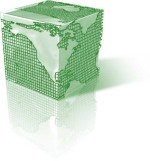If you look at the White House Fact Sheet for Climate Change impact and look for “water” it shows up 20 times.

Energy and Water are interconnected. The smart data center people think about the long term water use in their facility as it is going to get scarcer and more expensive
• Energy: “Extreme weather events are affecting energy production and delivery facilities, causing supply disruptions of varying lengths and magnitudes and affecting other infrastructure that depends on energy supply. The frequency and intensity of certain types of extreme weather events are expected to change. Higher summer temperatures will increase electricity use, causing higher summer peak loads, while warmer winters will decrease energy demands for heating. Net electricity use is projected to increase. Changes in water availability, both episodic and long-lasting, will constrain different forms of energy production. In the longer term, sea level rise, extreme storm surge events, and high tides will affect coastal facilities and infrastructure on which many energy systems, markets, and consumers depend. As new investments in energy technologies occur, future energy systems will differ from today’s in uncertain ways. Depending on the character of changes in the energy mix, climate change will introduce new risks as well as new opportunities.” (NCA Highlights: Energy Supply and Use)
• Water: “Climate change affects water demand and the ways water is used within and across regions and economic sectors. The Southwest, Great Plains, and Southeast are particularly vulnerable to changes in water supply and demand. Changes in precipitation and runoff, combined with changes in consumption and withdrawal, have reduced surface and groundwater supplies in many areas. These trends are expected to continue, increasing the likelihood of water shortages for many uses. Increasing flooding risk affects human safety and health, property, infrastructure, economies, and ecology in many basins across the United States… Increasing resilience and enhancing adaptive capacity provide opportunities to strengthen water resources management and plan for climate-change impacts.” (NCA Highlights: Water)
 Tuesday, June 10, 2014 at 2:45PM
Tuesday, June 10, 2014 at 2:45PM 




